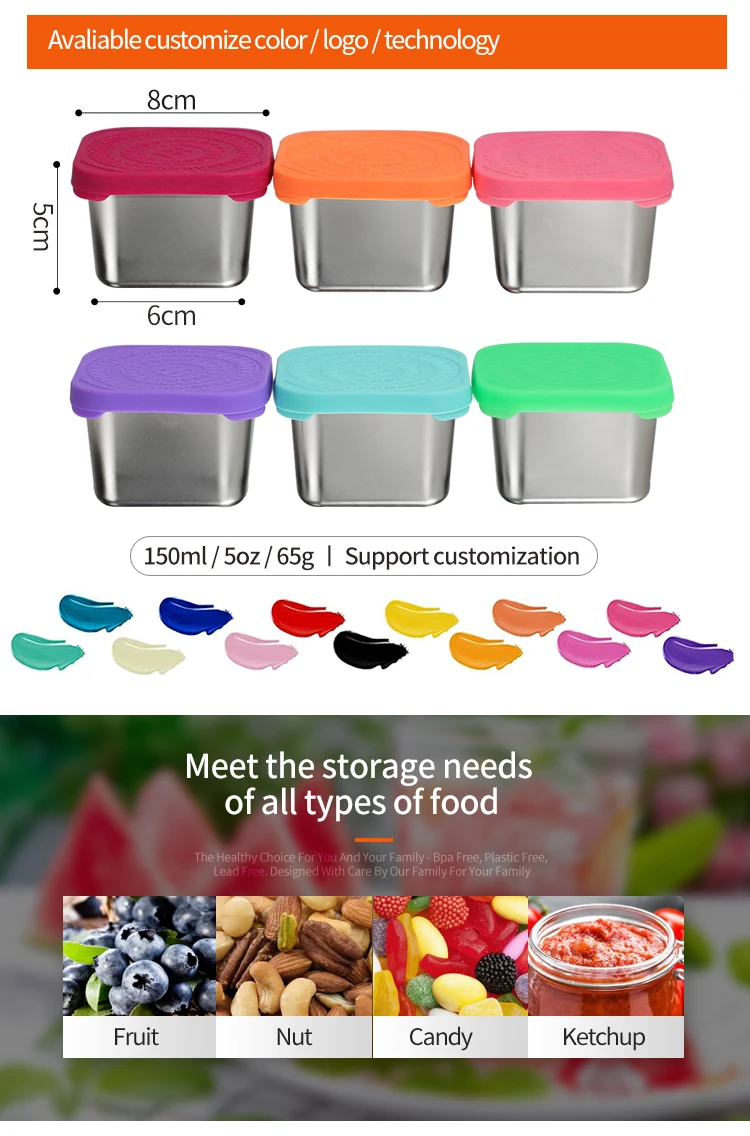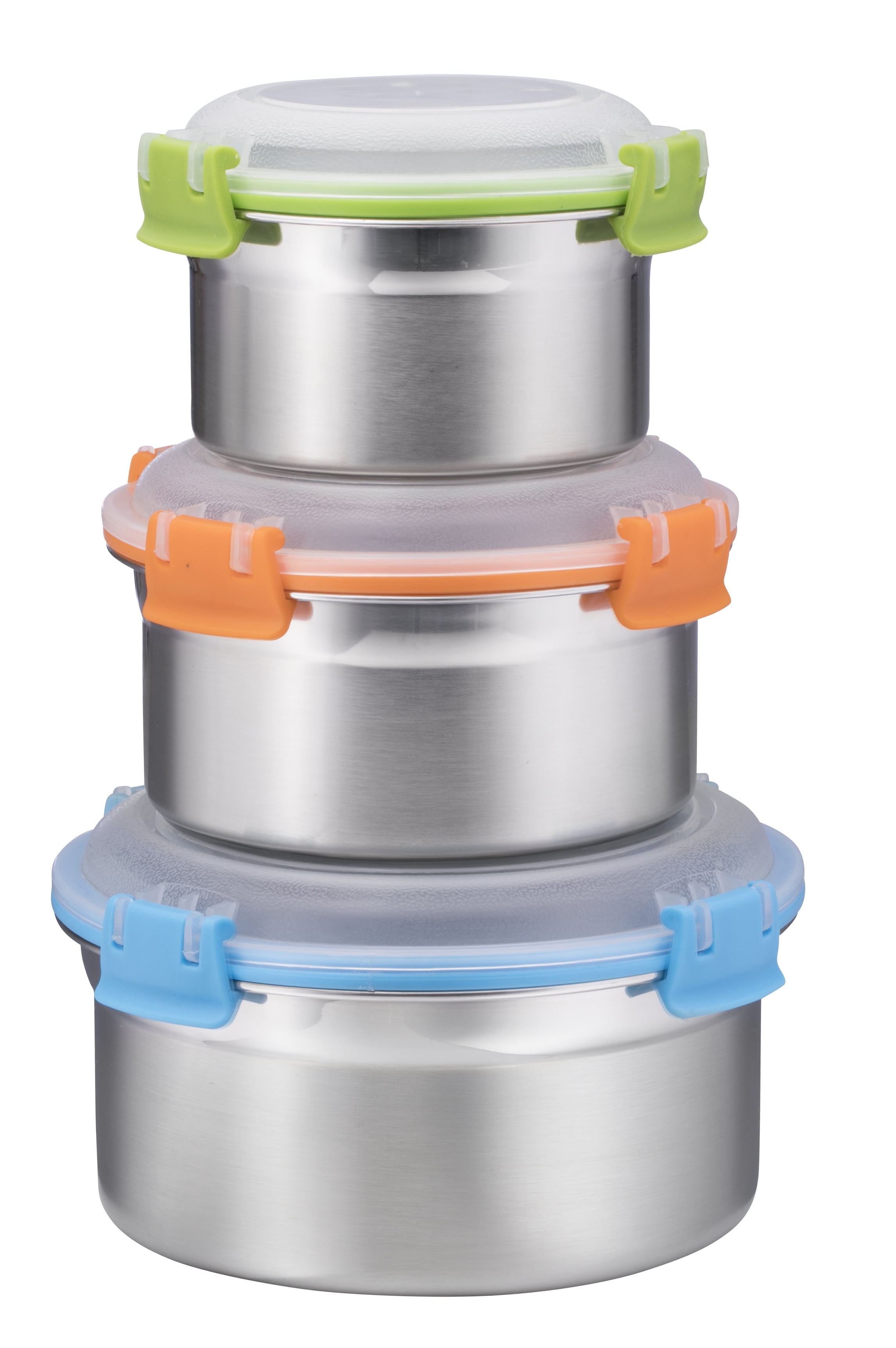Stainless Steel Food Containers With Silicone Lids

The global shift towards sustainable living has fueled a surge in demand for eco-friendly alternatives to traditional plastic food containers. Among the frontrunners are stainless steel containers paired with silicone lids, promising durability, safety, and reduced environmental impact. But are these reusable options truly a panacea, or do hidden caveats lurk beneath their sleek, sustainable veneer?
This article delves into the multifaceted world of stainless steel food containers with silicone lids, examining their benefits, potential drawbacks, market trends, and the evolving regulatory landscape. It will explore the materials used, dissect claims of sustainability, and offer insights into making informed consumer choices in a market increasingly saturated with green promises.
The Rise of Stainless Steel and Silicone
The growing awareness of plastic pollution and its detrimental effects on human health and the environment has propelled the popularity of stainless steel food containers. Stainless steel, particularly grades 304 (18/8) and 316, is lauded for its resistance to corrosion, staining, and leaching, making it a safe choice for food storage.
Silicone, a synthetic rubber made from silicon, oxygen, carbon, and hydrogen, has emerged as the preferred material for lids due to its flexibility, heat resistance, and perceived inertness. Unlike some plastics, silicone is generally considered food-safe and free of harmful chemicals like BPA, phthalates, and PVC.
Market Dynamics and Consumer Appeal
The market for reusable food containers is experiencing significant growth, driven by eco-conscious consumers and government initiatives promoting waste reduction. According to a report by Grand View Research, the global reusable food storage containers market size was valued at USD 8.79 billion in 2022 and is projected to reach USD 12.98 billion by 2030.
This growth is fueled by increasing consumer awareness, stricter regulations on single-use plastics, and the rising demand for convenient and healthy food storage solutions. Stainless steel containers with silicone lids appeal to consumers seeking durable, leak-proof, and aesthetically pleasing alternatives to plastic containers.
Benefits and Advantages
Stainless steel containers offer several advantages over their plastic counterparts. They are durable, long-lasting, and resistant to scratches and dents, making them a cost-effective investment in the long run.
Furthermore, stainless steel is non-reactive, meaning it won't absorb odors or flavors from food, preserving the taste and quality of stored items. Their resistance to bacteria buildup also makes them a more hygienic choice.
Silicone lids provide a tight seal, preventing leaks and spills, and their flexibility allows for easy opening and closing. Many silicone lids are also oven-safe and microwave-safe, expanding their versatility in the kitchen.
Potential Drawbacks and Concerns
Despite their many benefits, stainless steel and silicone containers are not without potential drawbacks. The manufacturing process of stainless steel can be energy-intensive, contributing to carbon emissions.
Concerns have also been raised about the leaching of chemicals from silicone at high temperatures. Although most food-grade silicone is considered safe, lower-quality silicone may contain fillers or additives that could potentially migrate into food.
Another consideration is the recycling infrastructure for both materials. While stainless steel is highly recyclable, the recycling process for silicone is more complex and less widely available, leading to questions about its end-of-life management.
Navigating Quality and Safety
To ensure the safety and quality of stainless steel and silicone containers, consumers should look for products made from food-grade materials and certified by reputable organizations. Look for markings such as "18/8" or "304" on stainless steel containers, indicating the grade of stainless steel used.
For silicone lids, choose products labeled as "food-grade silicone" and compliant with regulations such as those set by the FDA (Food and Drug Administration) or the European Union. It is also advisable to avoid using silicone lids at extremely high temperatures, especially for prolonged periods, to minimize the risk of leaching.
The Sustainability Question
While stainless steel and silicone containers are often marketed as sustainable alternatives to plastic, their true environmental impact is a complex issue. The long lifespan and reusability of these containers contribute to waste reduction, offsetting the environmental footprint associated with their production.
However, the energy-intensive manufacturing of stainless steel and the challenges associated with silicone recycling raise concerns about their overall sustainability. A life cycle assessment, considering the entire lifespan of the product from raw material extraction to end-of-life disposal, is needed to accurately assess their environmental impact.
Furthermore, the environmental impact of transportation and packaging should also be considered when evaluating the sustainability of these containers.
The Path Forward: Innovation and Regulation
The future of stainless steel and silicone food containers lies in continuous innovation and stricter regulations. Research and development efforts are focused on improving the energy efficiency of stainless steel production and developing more sustainable silicone materials.
Stricter regulations on the use of chemicals in silicone manufacturing and enhanced recycling infrastructure are also crucial for minimizing the environmental impact of these containers. Ultimately, informed consumer choices and responsible manufacturing practices will play a key role in realizing the full potential of stainless steel and silicone as sustainable alternatives to plastic food containers.
Moving forward, manufacturers should prioritize transparency and provide consumers with detailed information about the materials used, manufacturing processes, and end-of-life options for their products. This will empower consumers to make informed choices that align with their values and contribute to a more sustainable future.














